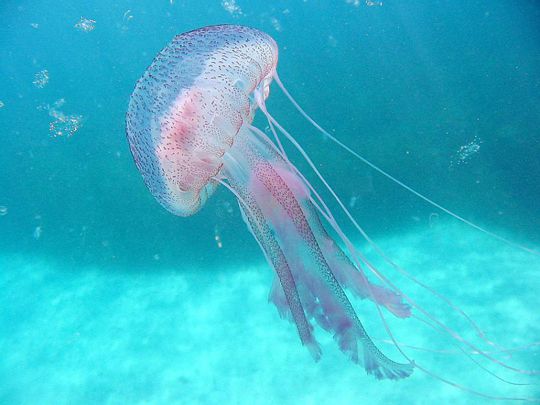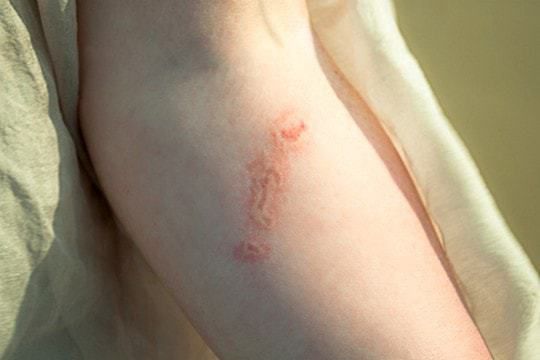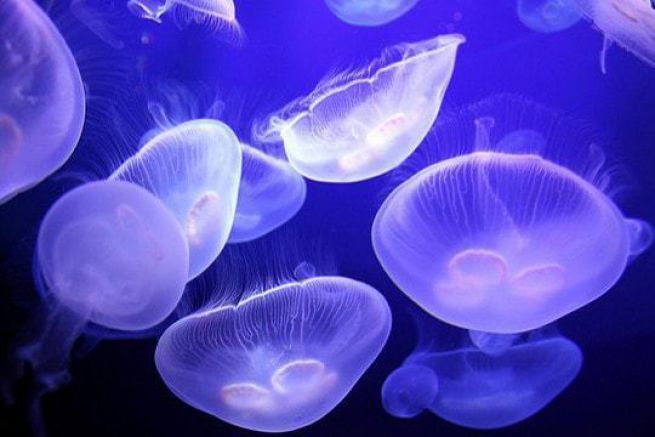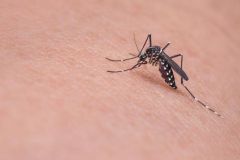On the French coast, there are mainly three species of jellyfish:
- The Aurelia jellyfish in the Channel
- Rhizostoma on the Atlantic
- The Pelagia Noctiluca in the Mediterranean Sea

Although painful - especially that of the Pelagia Noctiluca which is very urticating - their sting is not fatal. The jellyfish stings with its tentacles, which contain stinging filaments. The sting is temporary, but it is no less violent and causes a large burn, similar to an electric shock. After the sting, skin lesions, redness and swelling appear which take several days to disappear.
In some cases, very rare (especially in case of allergy), the sting can cause headaches, vomiting, discomfort, respiratory discomfort, even angioedema and/or anaphylactic shock.

There are several methods of getting through the pain, which are listed below:
TO DO
Rinse with sea water
Rinse your wound with seawater, rubbing gently to try to loosen any filaments that have become attached. Prefer warm water if possible or otherwise opt for saline solution. In case of stinging to the face or torso, immediately rinse the eyes with saline and consult a doctor.
Scrub with sand
After rinsing the wound, rubbing with sand will remove the filaments. Alternatively, the wound can be covered with sand and allowed to dry, then removed using a cardboard box to remove any remaining stinging cells before rinsing the wound again. The method also works with flour or shaving foam.
Remove the filaments remaining with tweezers or your gloved hands.
Apply cream
The sting of jellyfish is treated in the same way as a burn, thus, prefer fat, after having rinsed the wound well. The Biafine will soothe a light burn, the corticoid ointment will heal larger patches thanks to their anti-inflammatory effect. Finally, Vaseline will make the blister formed by the burn disappear.
Apply lavender oil
Lavender oil is known for its ability to soothe mosquito bites, but also jellyfish bites. After rinsing the wound, apply 1 to 2 drops of lavender essential oil and repeat 3 to 4 times during the next half hour.
Take an antihistamine
If you have an allergy - for example, if you keep scratching yourself - take an antihistamine. If you don't have one, go to a pharmacy where you can get a remedy.
ATTENTION!
Grandmother's recipes" of using urine or vinegar on the sting should be used sparingly. Urine can superinfect the wound, while vinegar can activate urticating cells rather than soothe the pain. However, the application of white vinegar can be beneficial for certain species of jellyfish such as Pelagia noctiluca, which is found in the Mediterranean.
DO NOT DO
- Avoid clear water, which will increase the stinging effect of the sting by bursting unperforated stinging cells.
- Don't move the body part that was pricked
- Do not rub
- Do not attempt to incise the wound
- Don't suck the venom out of your mouth..
- Do not use alcohol










